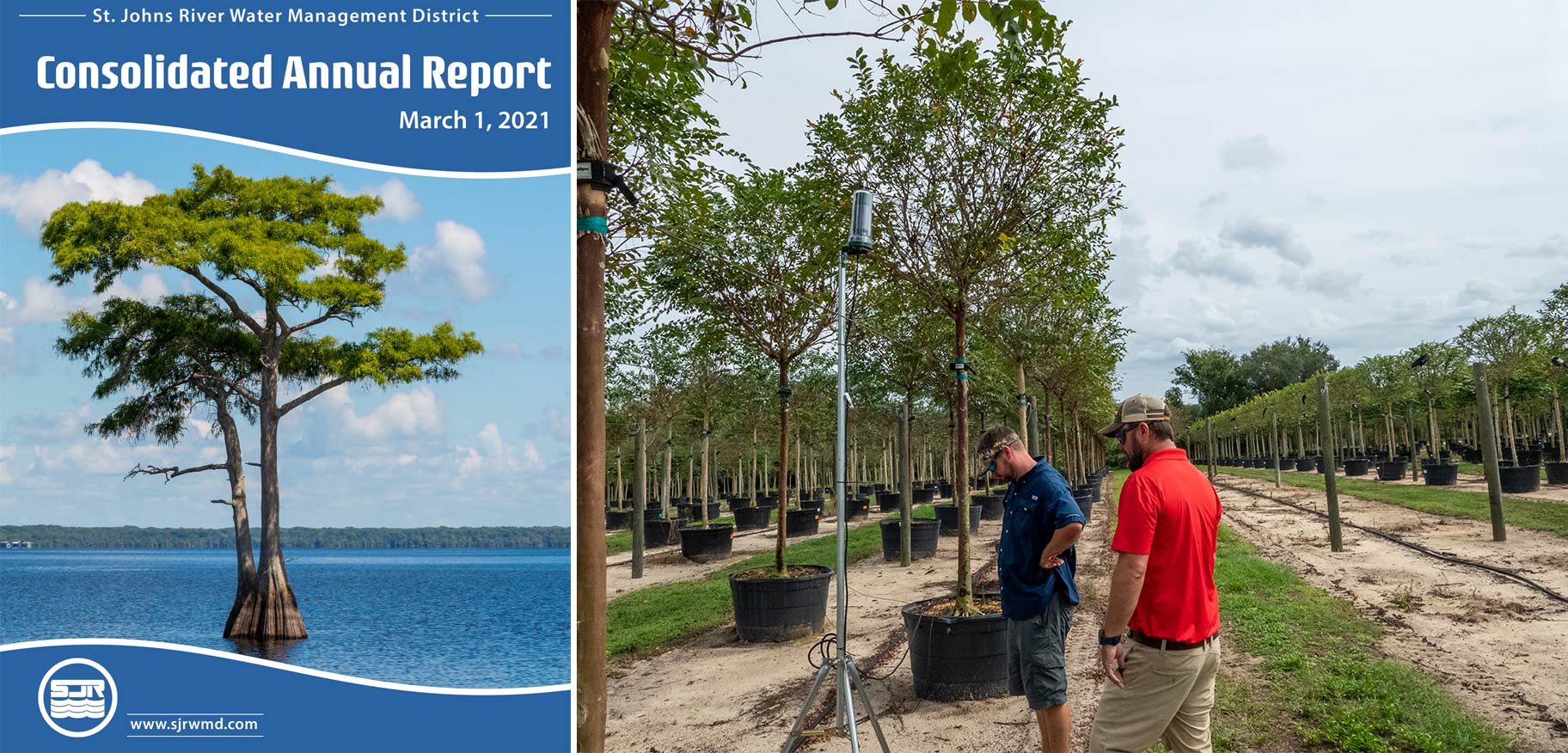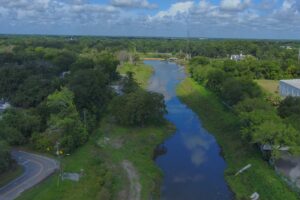District Consolidated Annual Report highlights water resource protection progress
Feb. 11, 2021
As a state regulatory agency, the work of the St. Johns River Water Management District to protect water resources is done on behalf of the District’s citizens with transparency and easy access to details of our projects, priorities and plans.
One of the important ways the District communicates with Florida’s taxpayers is through the series of reports we publish each year. At their February meeting this week, our Governing Board members approved the 2021 Consolidated Annual Report (CAR). This annual report is packed full of information on the District’s work, combining nine legislatively mandated individual reports, including as our 2021–25 Strategic Plan, 2021–24 Minimum Flows and Levels Annual Priority List and Schedule, Annual Five-Year Capital Improvements Plan and more.
Collectively, these reports highlight each of the District’s core missions, which guide our staff’s work and documents our successes. Some of our greatest 2019–2020 achievements, which are highlighted in the 2021 CAR, include investing more than $23 million in District funds for water quality improvement cost-share projects, resulting in estimated total nitrogen nutrient load reductions of 105,000 pounds per year, a one-time total nitrogen load reduction of 189,000 pounds (muck removal project), estimated total phosphorus nutrient load reductions of more than 21,500 pounds per year, and an estimated one-time total phosphorus load reduction of nearly 115,800 pounds (muck removal project). The total project costs exceeded $73 million.
We also funded $2.6 million in agricultural cost-share projects to increase irrigation efficiency for about 3,660 agricultural acres. These projects have reduced overall groundwater consumption for these acres by 1.7 mgd.
We couldn’t achieve great things without our great staff. Our project managers are making tremendous progress on pay-for-performance projects to reduce the frequency and intensity of algal blooms in Lake Apopka and Doctors Lake in Clay County.
Our land managers continue to make great strides in protecting and enhancing our public lands, controlling invasive plant species on 27,000 acres and conducting 61 prescribed burns on more than 16,000 acres of District land.
District project construction managers achieved numerous flood protection milestones, including six miles of reconstruction to the L-75 levee in the Upper St. Johns River Basin and other improvements, and improving or refurbishing 10 miles of the Lake Apopka Wildlife Drive, six miles of Fellsmere Grade and the newly opened Fellsmere Water Management Area.
Our field scientists worked to increase submerged aquatic vegetation coverage in Lake Apopka to 202 acres in 2019, and to expedite vegetation recovery, planted 9,920 individual plants (2.01 acres) in FY 2019–20. Our scientific staff also collected and processed 5,865 water quality surface and groundwater samples, despite the challenges of the COVID-19 pandemic.






